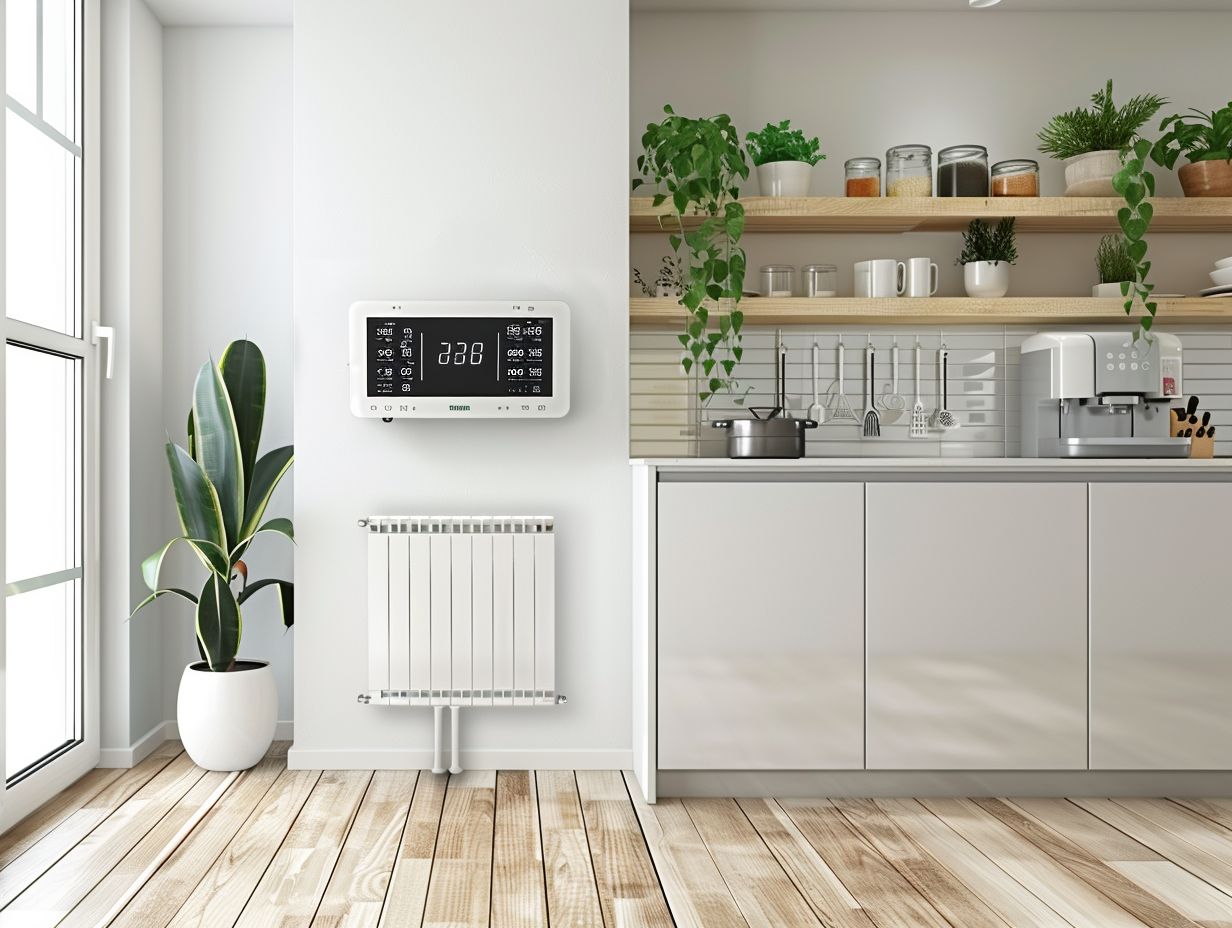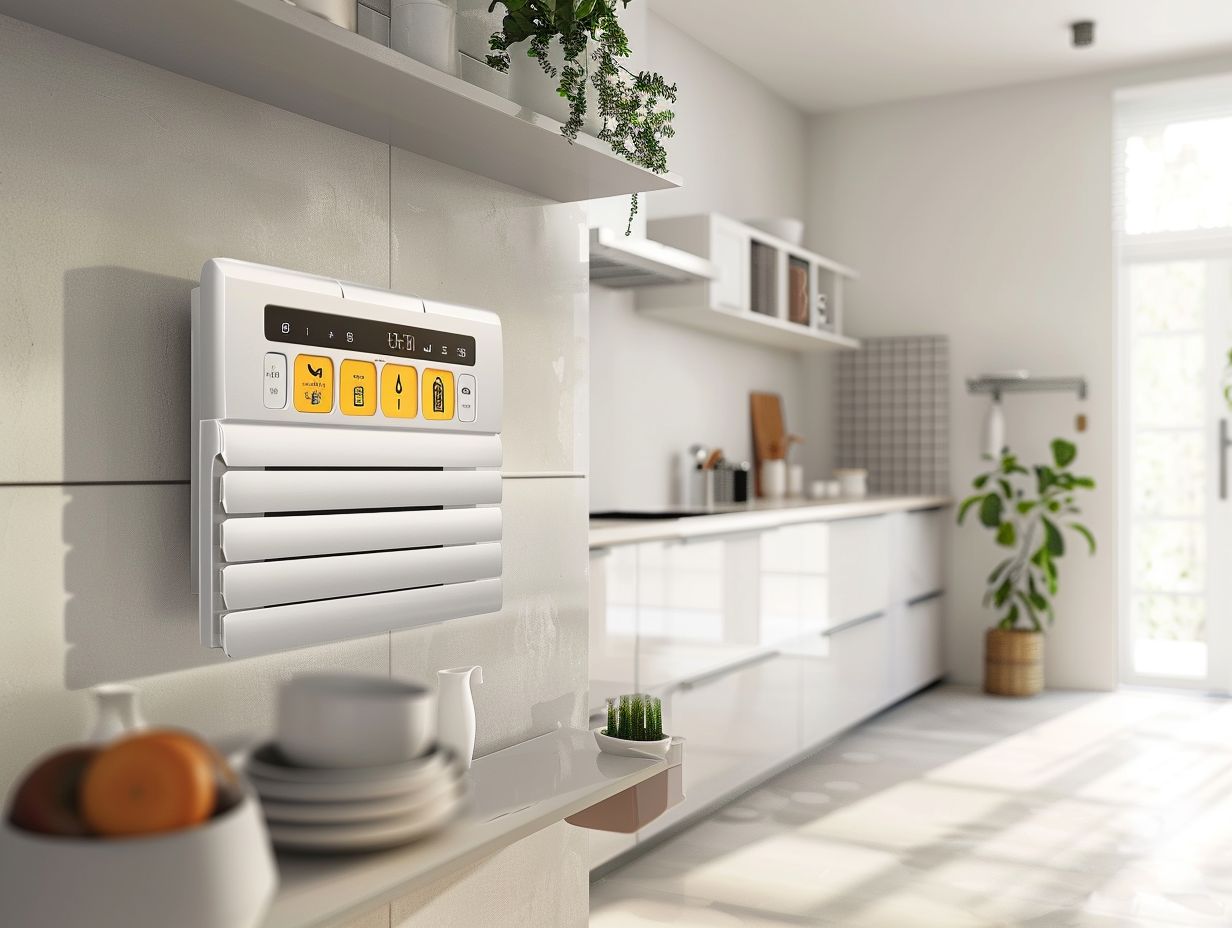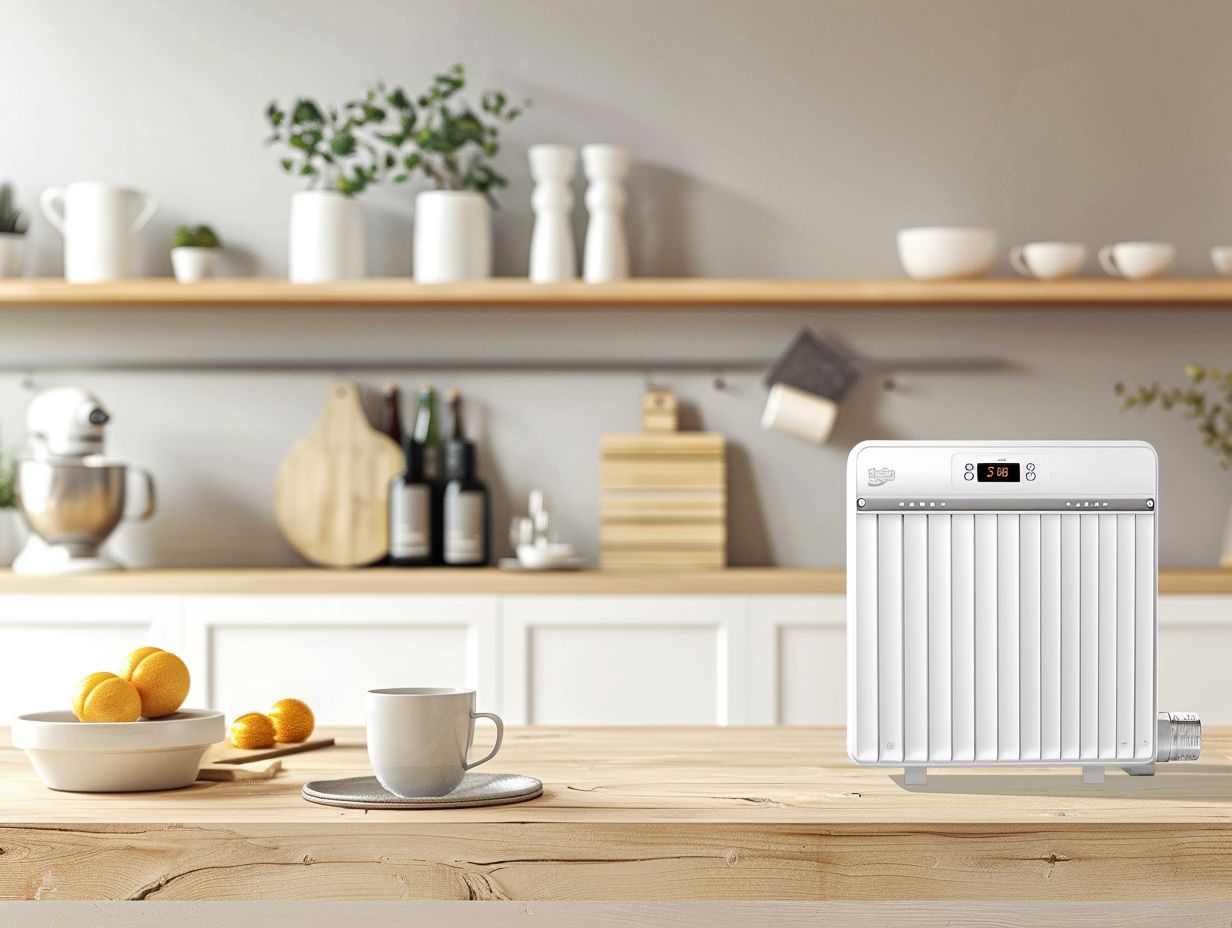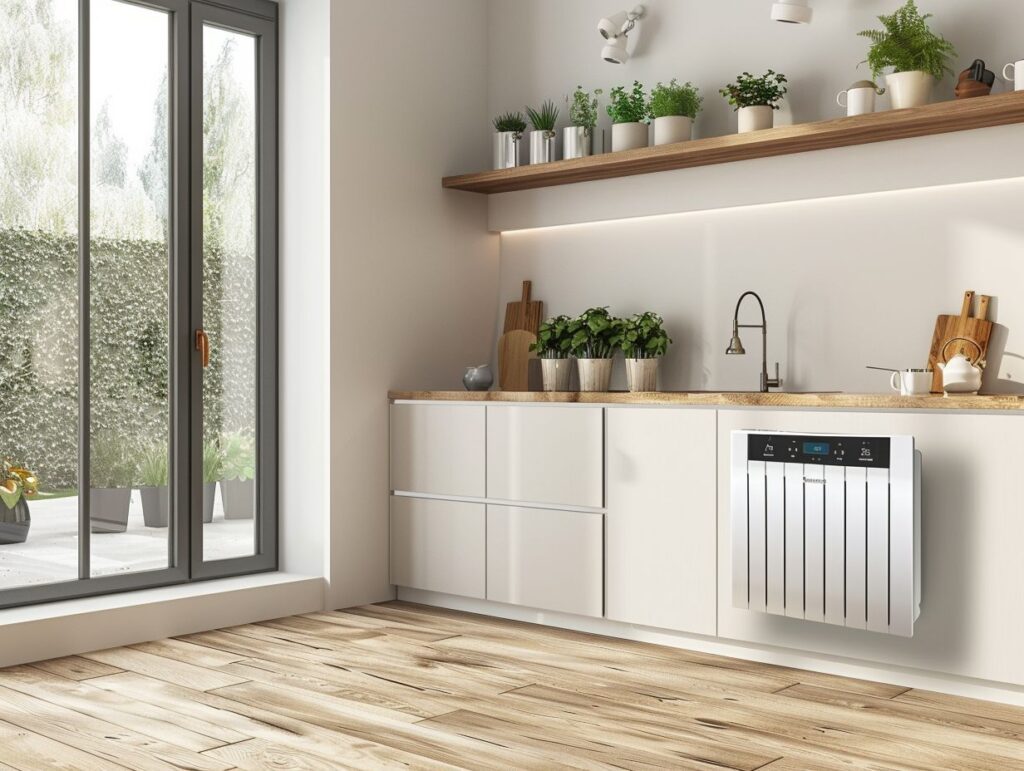If you are considering installing electric kitchen radiators but are worried about the running costs, this exploration will help clarify the matter. There are various factors that affect the running costs of electric kitchen radiators, including the types of radiators available and their efficiency levels.
In addition, factors such as insulation quality and energy consumption contribute to the overall costs.
In this discussion, we will explore methods for calculating the running costs of electric kitchen radiators, compare these costs with alternative heating options, and provide practical tips for reducing running costs through energy-efficient practices.
Please continue reading to gain the comprehensive insights necessary to make an informed decision about electric kitchen radiators.
Key Takeaways:

- Electric kitchen radiators’ running costs depend on factors such as type, efficiency, insulation, and energy usage.
- The cost of running electric kitchen radiators can be calculated by considering electricity rates, usage patterns, and comparing with other heating options.
- To reduce running costs, energy-saving techniques and tricks can be applied, such as improving insulation and using the radiators efficiently.
Factors Affecting Running Costs
When you are evaluating electric kitchen radiators, it is important to take into account various factors that can impact their running costs. The energy efficiency of the radiators, the characteristics of the room being heated, and the insulation levels of the space all contribute significantly to determining the total operation expenses.
Types of Radiators and Their Efficiency
When selecting electric kitchen radiators, consider the various types available, each offering different levels of efficiency depending on the room being heated. Understanding these types and their respective efficiencies is crucial for choosing the most suitable radiator to achieve optimal heating performance.
For smaller kitchens or compact spaces, panel heaters are a popular choice due to their sleek design and efficient heating capabilities. Conversely, convector radiators are well-suited for mid-sized kitchens, providing fast and even heat distribution.
In larger kitchen areas, electric fan-assisted radiators are recommended for their robust heating output. Additionally, infrared radiators are an excellent choice for spot heating, making them ideal for specific areas within the kitchen.
When making a selection, it is important to take into account the room layout and insulation levels to ensure efficient heating and energy savings. Careful consideration of these factors will help you choose the right electric kitchen radiator for your specific needs.
Insulation and Energy Usage

Incorporating proper insulation into your property can have a substantial impact on the energy efficiency of electric kitchen radiators. Spaces with effective insulation can retain heat better, reducing the workload on radiators and resulting in decreased energy consumption and costs.
When your property is well-insulated, the heat generated by electric kitchen radiators remains within the space for longer durations, creating a stable and comfortable environment.
This not only decreases the operational time of radiators but also ensures that heat is evenly distributed throughout the room. By optimising the quality of insulation, you can enhance the efficiency of electric radiators, leading to a more sustainable and cost-effective heating system.
Analysing usage patterns and making improvements to insulation can lead to a significant reduction in energy wastage and yield financial savings over time.
Calculating the Cost of Running Electric Kitchen Radiators
When calculating the cost of running electric kitchen radiators, you must take into account several factors, including heating requirements, electricity tariffs, and usage patterns. By carefully analysing these elements, you can estimate the expenses associated with maintaining a comfortable room temperature.
Electricity Rates and Usage Patterns
The tariffs and usage patterns of electricity have a direct impact on the total energy costs associated with operating electric kitchen radiators. Understanding these tariffs and optimising usage patterns can result in substantial cost savings and more efficient heating solutions.
By carefully considering peak and off-peak hours, you can strategically plan the usage of your radiators during times when electricity tariffs are lower, leading to significant cost reductions. Implementing energy-efficient practices such as ensuring proper insulation, conducting regular radiator maintenance, and installing programmable thermostats can further improve energy efficiency.
Additionally, it is crucial to examine the various energy plans available from suppliers, comparing tariffs and benefits to select the most economical option for operating electric kitchen radiators.
Comparing Costs with Other Heating Options
When evaluating the costs of running electric kitchen radiators, it is beneficial for you to compare them with other heating options available, such as air source heat pump systems or ground source heat pump systems. Understanding the comparative costs and efficiencies can help you, as a homeowner, make informed decisions.
Air source heat pump systems are renowned for their energy efficiency, utilising the heat from the air to warm up spaces. Although they can be more expensive upfront, their lower operating costs over time often make them a cost-effective choice in the long run.
On the other hand, ground source heat pump systems tap into the consistent temperature underground, providing efficient heating solutions. The installation of ground source heat pumps can be more complex and costly, requiring careful consideration before implementation.
Ways to Reduce Running Costs

One can reduce the operating expenses of electric kitchen radiators by implementing a range of energy-saving techniques. By adjusting heat settings effectively and employing smart thermostats that can be controlled through smartphone applications, there are numerous methods available to decrease energy costs while ensuring optimal room temperatures.
Energy-Saving Tips and Tricks
Implementing energy-saving tips and tricks can help optimise the performance of your electric kitchen radiators while reducing overall energy consumption. Simple practices such as adjusting thermostat settings based on room occupancy and leveraging British weather conditions can lead to substantial energy savings.
Incorporating room-specific heating strategies can further improve efficiency. For instance, focusing on heating only the areas that are being used at a given time rather than heating the entire house can result in significant energy conservation.
Utilising thermal curtains or draught excluders to trap heat within the room can also enhance the effectiveness of your electric radiators. By integrating these tailored tactics into your daily heating routine, you can create a more sustainable and cost-effective home heating environment.
Frequently Asked Questions
What factors affect the cost of running an electric kitchen radiator?
The cost of running an electric kitchen radiator can be influenced by several factors, including the size and wattage of the radiator, the duration and frequency of use, and the cost of electricity in your area.
How do I calculate the cost of running an electric kitchen radiator?

To estimate the cost of running your electric kitchen radiator, you can multiply the wattage of the radiator by the number of hours you use it per day, and then multiply that by the cost of electricity per kilowatt-hour in your area.
What is the average cost to run an electric kitchen radiator?
The cost of running an electric kitchen radiator can vary, but on average, it can range from $0.05 to $0.30 per hour, depending on the factors mentioned earlier.
Are there any energy-saving features available for electric kitchen radiators?
Yes, some electric kitchen radiators have energy-saving features such as timers, thermostats, and programmable settings that can help reduce the cost of running them.
Is it more expensive to run an electric kitchen radiator compared to other types of heating?
The cost of running an electric kitchen radiator can be higher than other types of heating, such as gas or oil, but it also depends on the efficiency of your heating system and the cost of energy in your area.
Are there any ways to reduce the cost of running an electric kitchen radiator?
Yes, you can reduce the cost of running your electric kitchen radiator by using energy-saving settings, limiting its use to only when needed, and keeping the room well-insulated to prevent heat loss.

